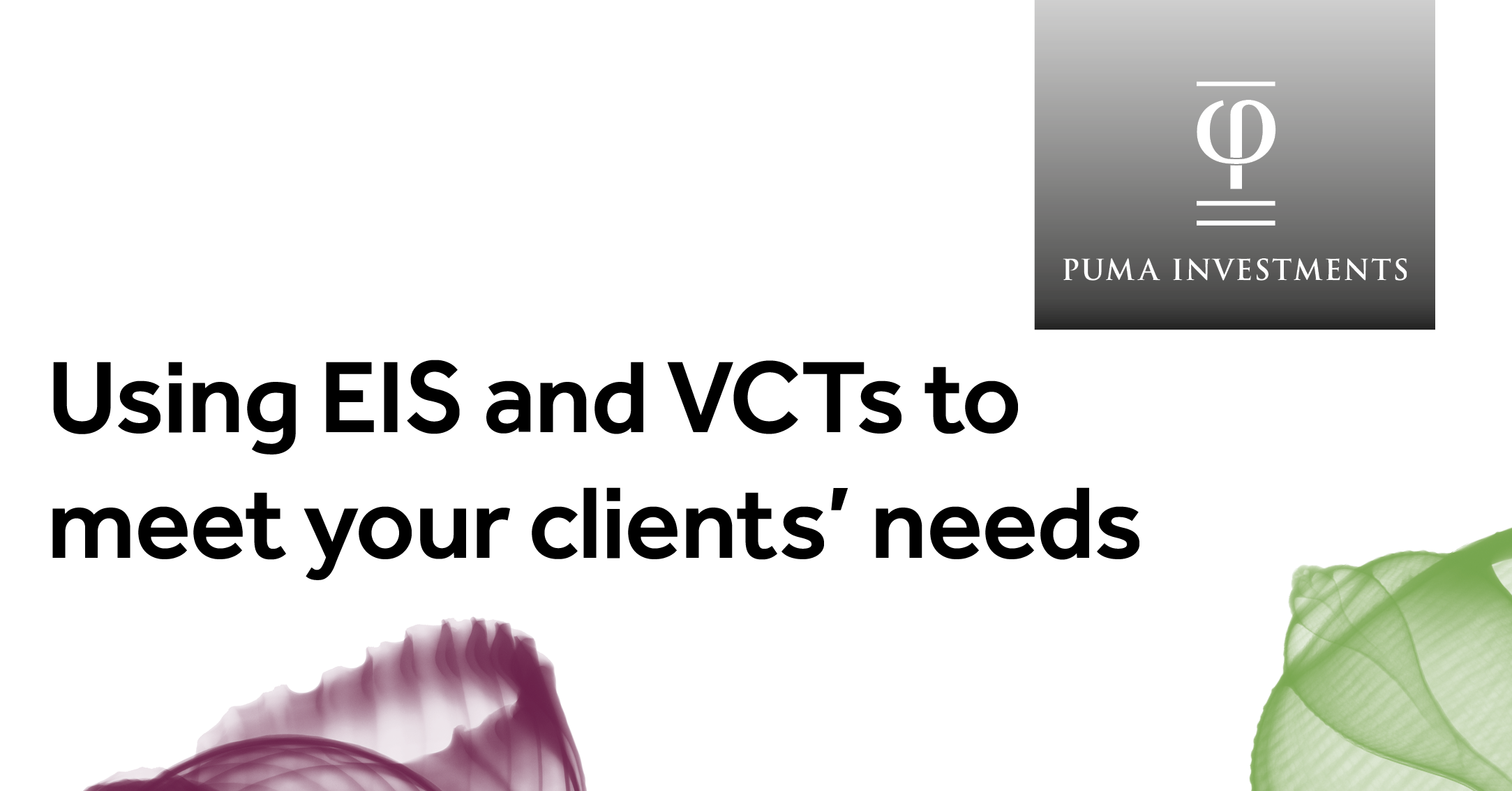
Using EIS and VCTs to meet your clients’ needs
Introduced by the government in the 1990s to encourage growth investment into small and medium-sized businesses (SMEs), the Enterprise Investment Scheme (EIS) and Venture Capital Trusts (VCTs) can support investors’ financial planning needs in different ways.
To attract investment into SMEs, which is important for the UK’s future economic prosperity, EIS and VCTs come with some significant tax breaks. Both can offer low correlation to mainstream capital markets and, given the relatively recent caps on annual pension contributions, both can help investors save tax-efficiently for their retirement alongside pension contribution allowances.
VCT key features
VCTs are publicly-listed companies and investors hold shares in the trust itself, providing up to 30% annual income tax relief on a maximum investment of £200,000. To maintain the relief, shares must be held for a minimum of five years but can be held for much longer.
Alongside potential growth, other key benefits include tax-free capital gains and dividends. These tax-free dividends often attract investors who, whilst potentially benefitting from upfront income tax relief, are also looking for income over the life of the investment. Reflecting their growing popularity, 2018-19 recorded the second largest VCT fundraise to date, at £731 million.
EIS key features
Unlike VCTs, an EIS investment is made directly into unquoted trading companies – whether a single company or a portfolio of companies managed by an investment manager like Puma Investments. There are numerous tax incentives for taking the risk associated with investing into these businesses, including up to 30% income tax relief (on up to £1 million in any tax year or £2 million if anything above £1 million is in ‘knowledge intensive’ investments). Other tax incentives include 100% capital gains tax (CGT) deferral for the life of the investment, Business Relief qualification giving 100% inheritance tax (IHT) relief, tax-free growth on any gain, and loss relief where any loss made on EIS shares can potentially be offset against capital gains or income.
Investments need to be held for a minimum of three years, but it could take four or five years to be fully invested into each of the companies. As EIS investments aren’t tradeable or readily realisable, investors should be comfortable with a long-term investment horizon to enable time to invest and achieve potential growth. And as EIS doesn’t offer tax-free dividends, investments focus on generating long-term growth rather than delivering a regular yield.

Scenarios to meet investment needs
Investing into EIS and VCTs can solve a range of investment scenarios. This includes: using EIS to diversify investment into private companies or defer capital gains tax on the sale of property or shares; using a VCT to achieve regular tax-free income; or using income tax relief from either to extract profit from a business tax-efficiently. For instance, a company owner wishing to realise a £100,000 dividend incurring 32.5% tax could invest the dividend into a VCT, which can deliver up to 30% tax relief to help offset this tax liability.
As inheritance tax is often considered by older clients also drawing down from a pension, the combined income tax and inheritance tax benefits of EIS can make it an attractive proposition for the right investor.
Target investment criteria
The new regulatory landscape for EIS and VCTs means investors can access higher-growth companies and support the SME backbone of the UK economy whilst benefitting from valuable tax reliefs and investments that can produce attractive growth or returns.
However, growth-focused investing requires effective risk management. It's important to be able to assess the types of companies that qualify for EIS and VCT investment, know what managers look for and recognise investment criteria that helps mitigate risk. For instance, consider how closely an investment manager works with the companies in which they invest, how diversified their investments are, how they manage risk effectively and whether they work to de-risk by investing in scale-up companies versus start-ups.
1. Provided that at least £1 million is invested in ‘knowledge intensive’ companies. Please note: this is a high-level summary and not all VCT/EIS investments will have the characteristics set out above. Tax reliefs depend on the individual investor’s circumstances and may be subject to change.